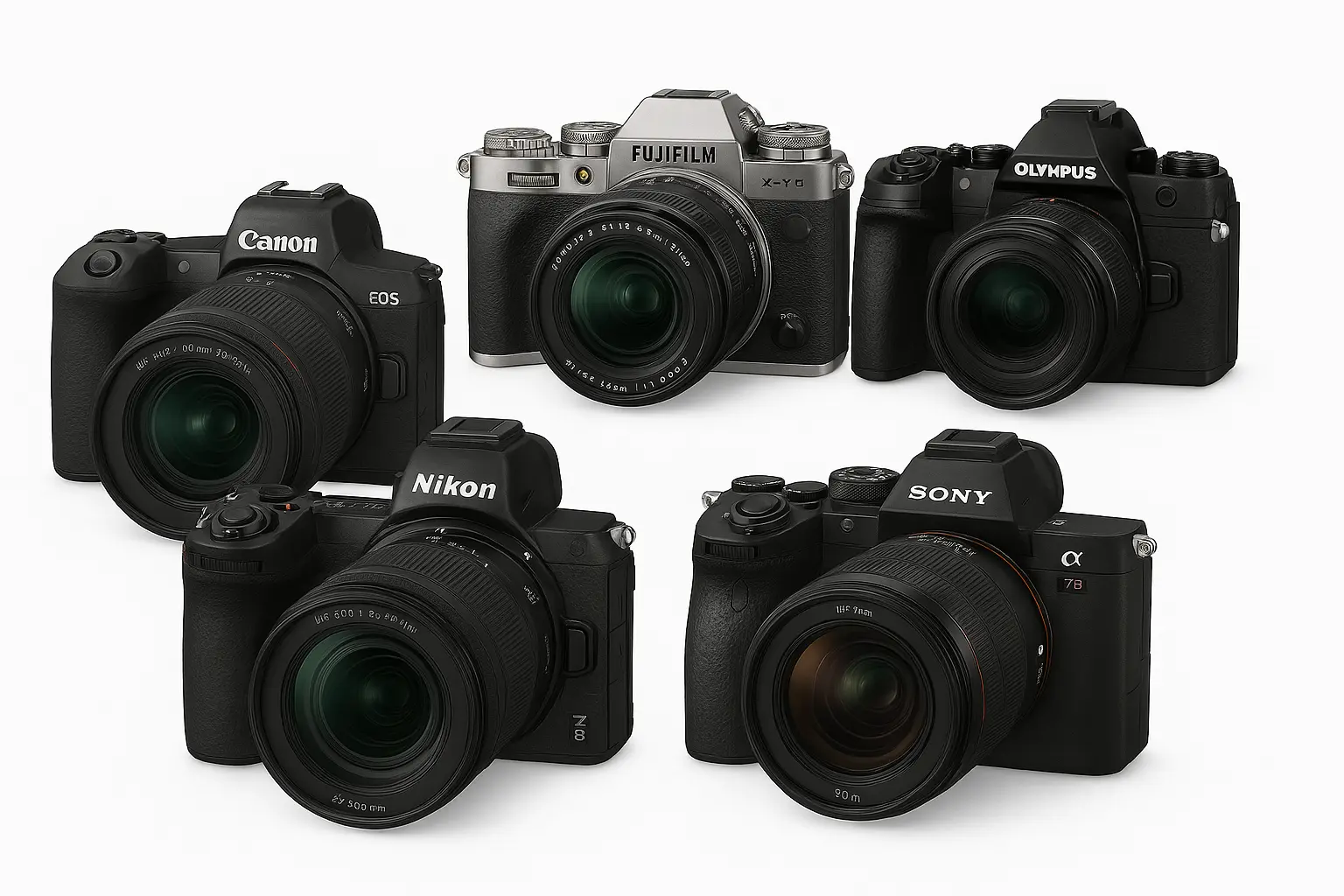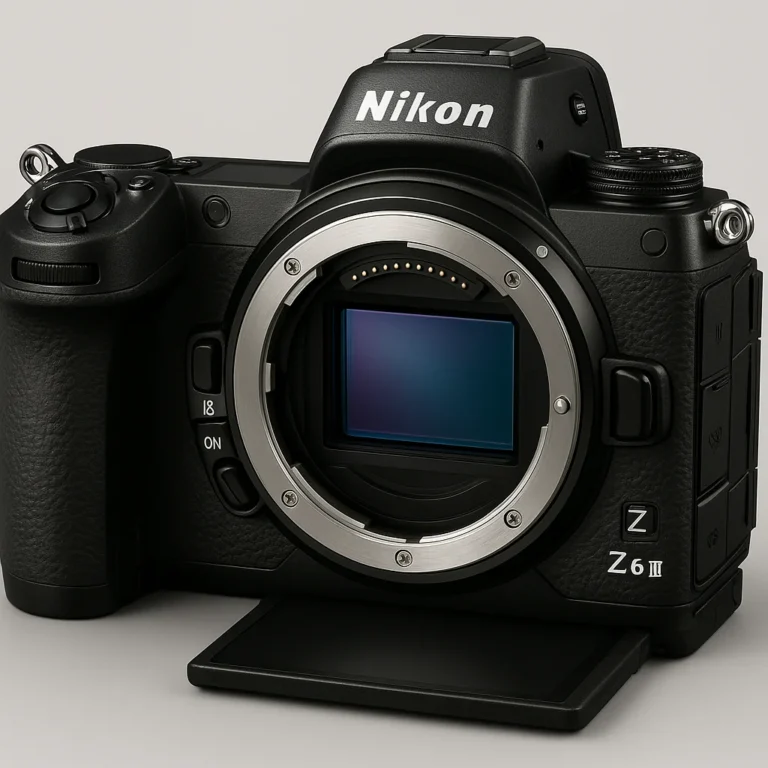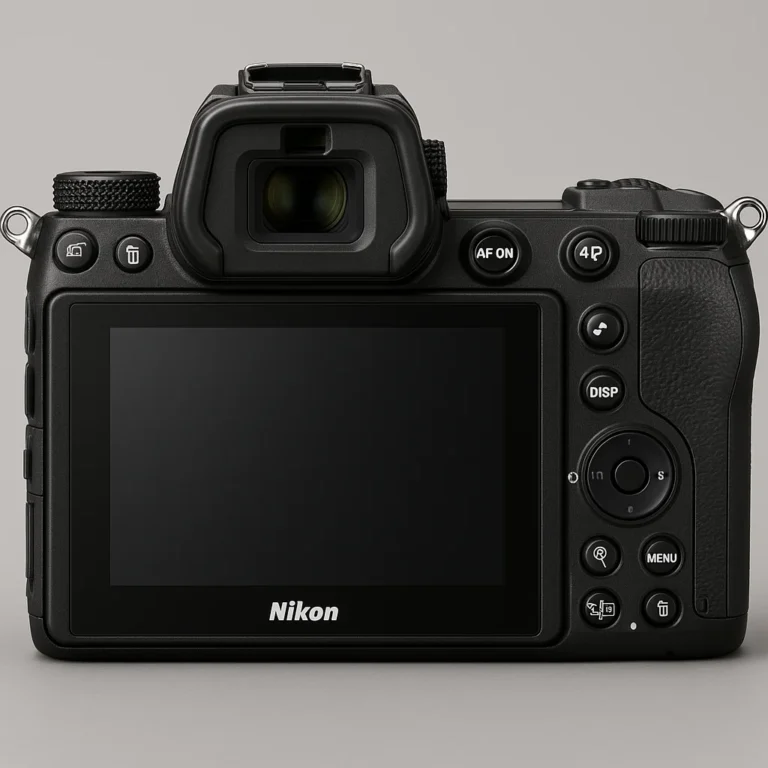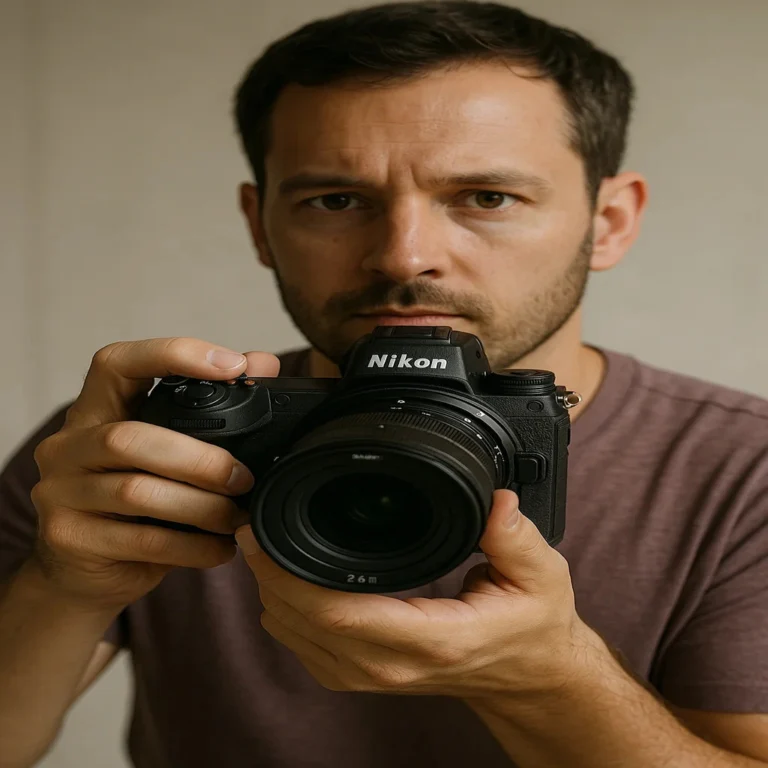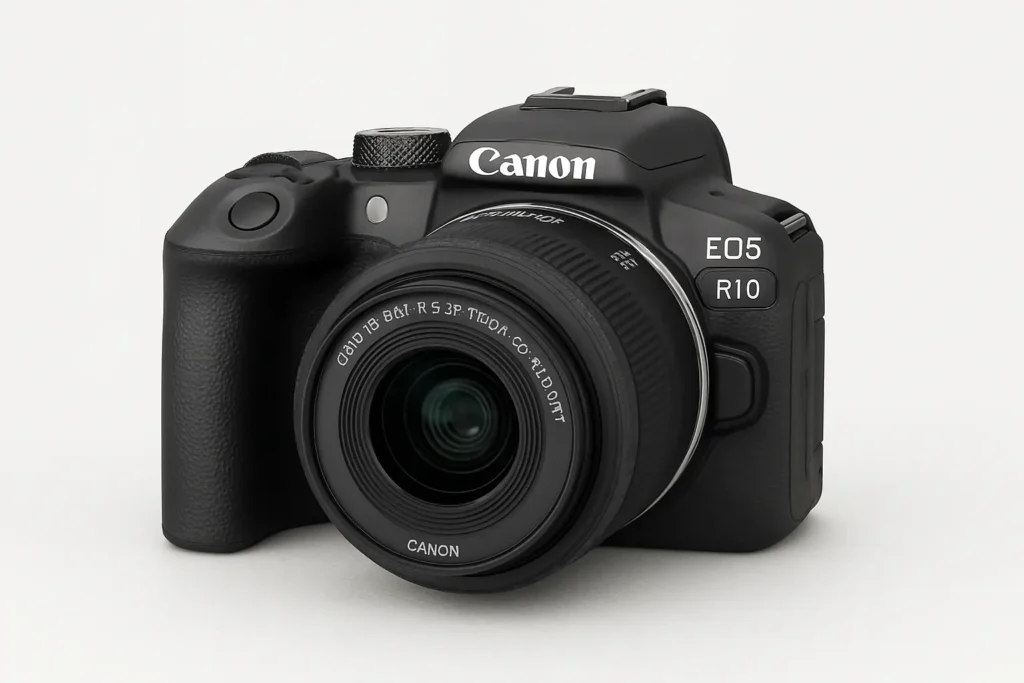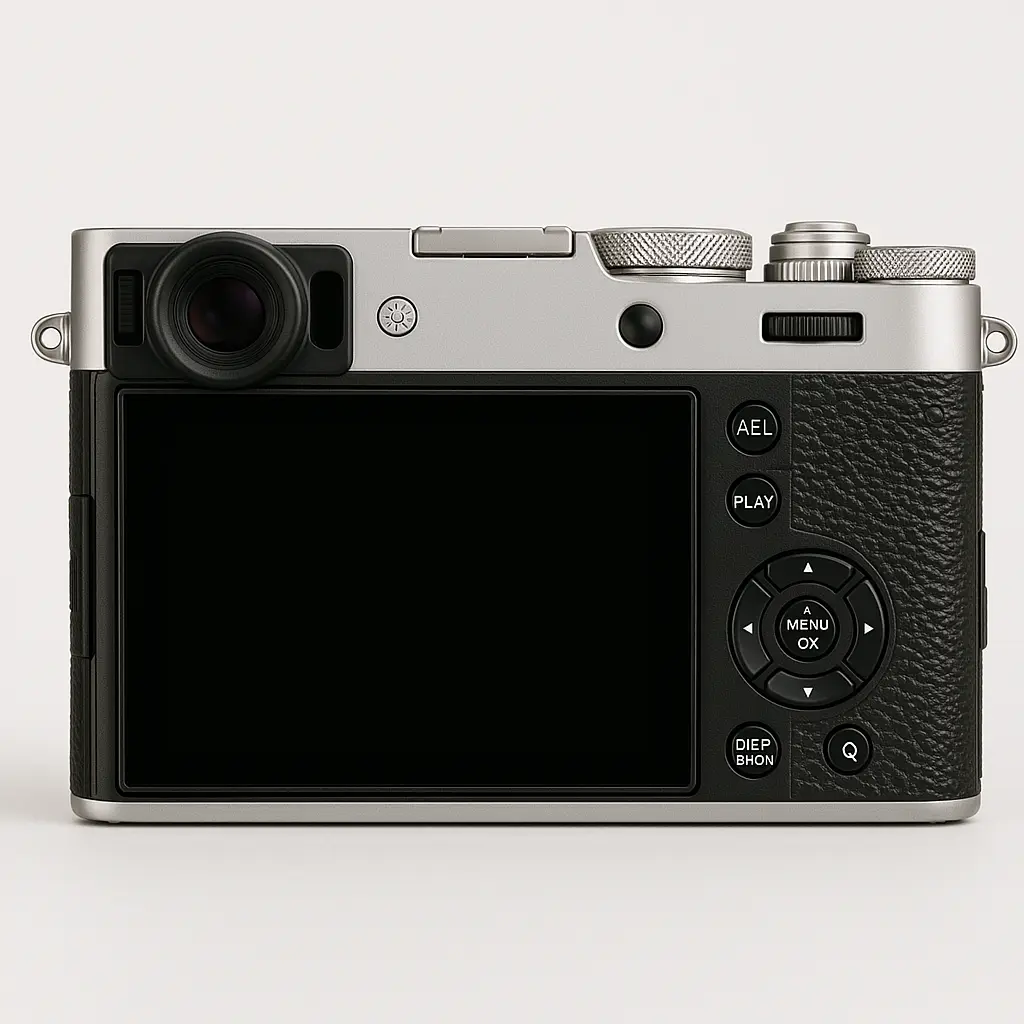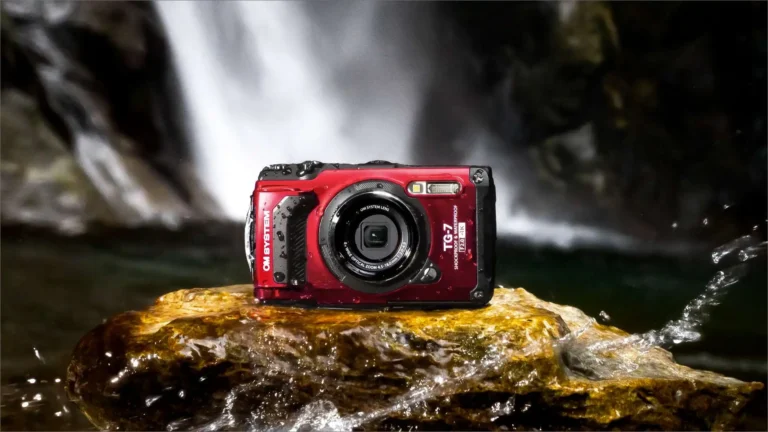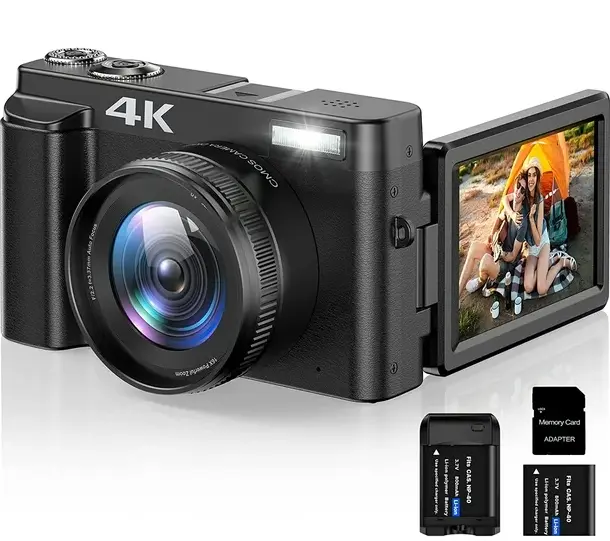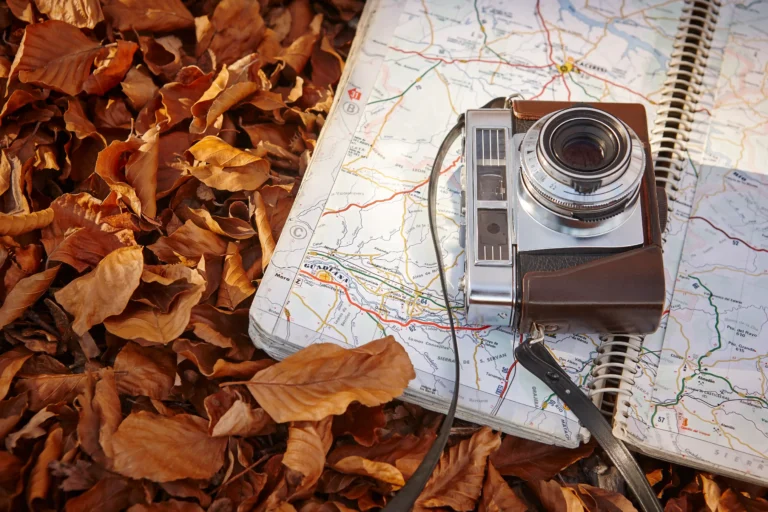The 5 Best Cameras For Photography in 2025
Finding the best cameras for photography and videography can be overwhelming, but a well-researched buying guide makes it easier. Whether you are a beginner or an expert, the right tools can elevate your skills. From mirrorless to compacts, the market offers a wide range of choices, balancing performance, quality, and value.
For those who need speed and precision, the Nikon Z6 III is a premium choice, delivering next-level results. If capturing detail is your priority, the Sony A7R V provides an ideal blend of stills and video. Meanwhile, the Canon EOS R10 is the easier option for beginners, offering smooth handling at an affordable budget. DSLR lovers who prefer a classic shooting experience can still find solid options in the market.
When choosing a camera, consider your skill level and the type of content you’ll be creating. If you’re into sports or action, focus on cameras with fast focusing and elite tracking capabilities. Our expert team has tested multiple models in real-world conditions, spending hours to find the top choices. The reviews below will help you decide which camera fits your needs. Whether you’re looking for a hybrid that blends photography and videography or a dedicated DSLR, there’s an option for every type of creator.
Top 3 Picks
Below is the summary of the best cameras for photography. If it matches your requirements just click on the link to get our complete review for that camera.
Best Overall
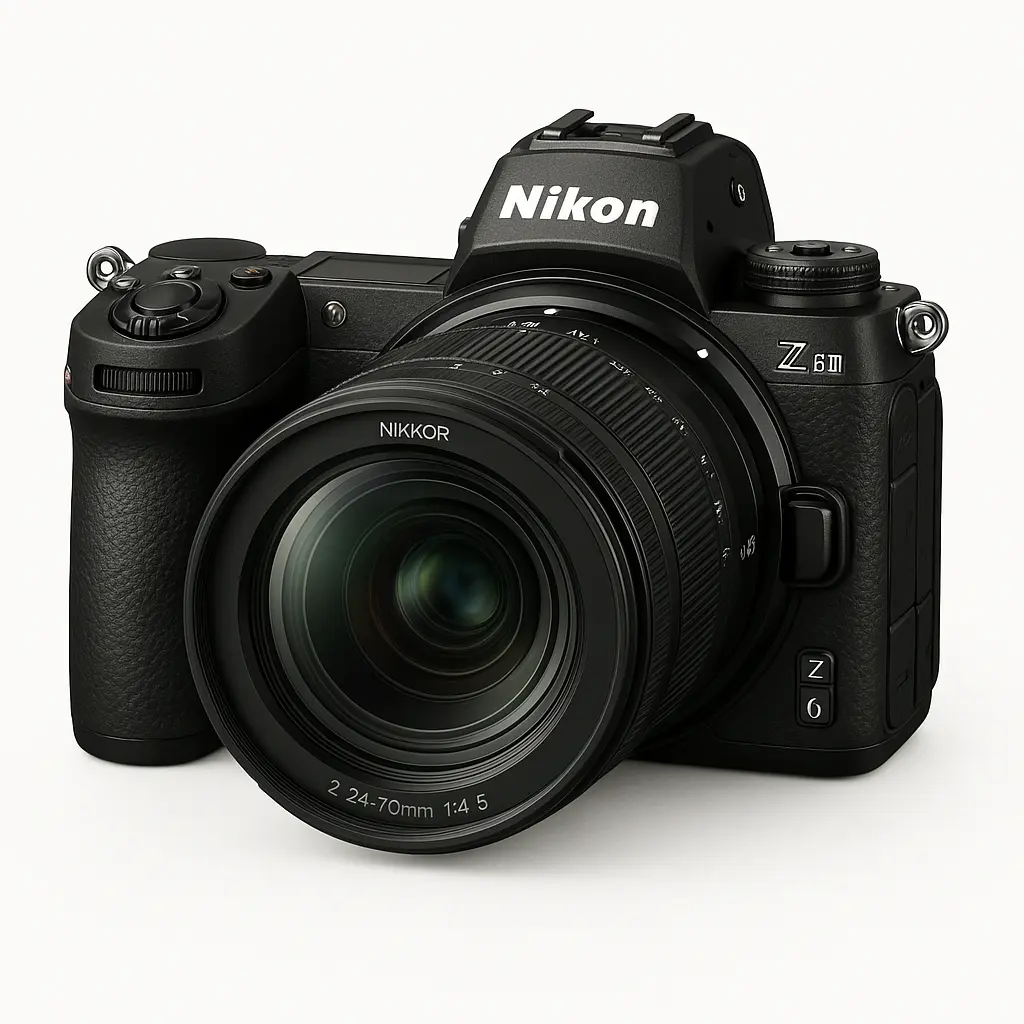
1. Nikon Z6 III
The Nikon Z6 III is our best choice if you wish for a full-frame camera with combined power, speed, dependability, and quality for both photo and video creatives.
Best Beginner
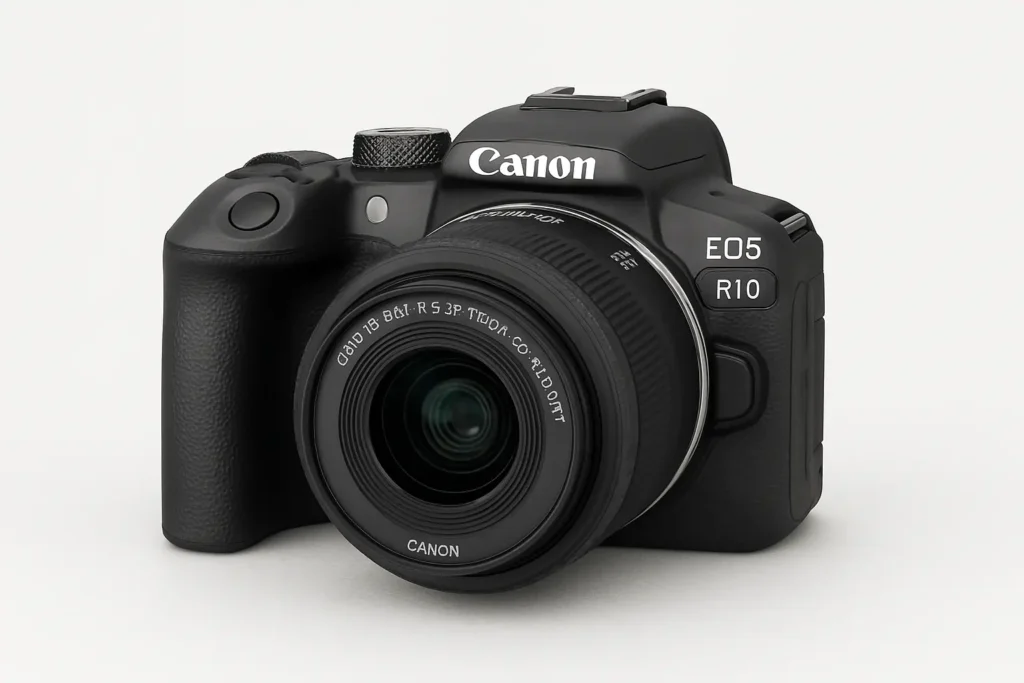
2. Canon EOS R10
Beginners will find great value in the Canon EOS R10, which has a small design, good handling and contemporary autofocus.
Best For Pros
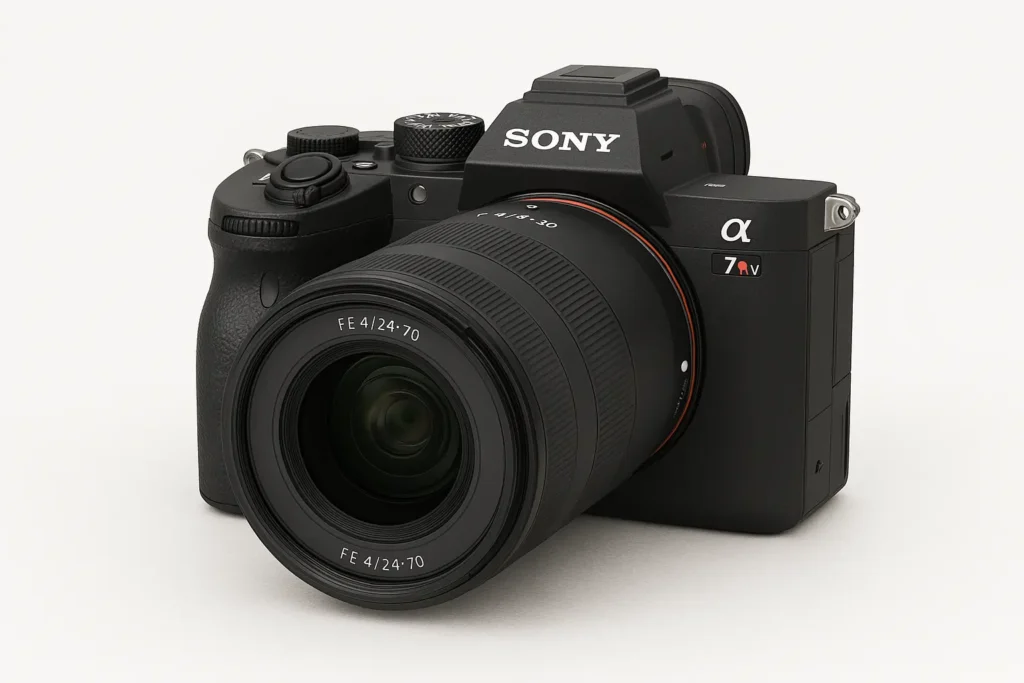
3. Sony A7R V
When matched with a top-notch lens, the flagship Sony A7R V produces amazing stills thanks to its enormous pixel count and exceptional autofocus.
Best By Use
Best Premium Compact
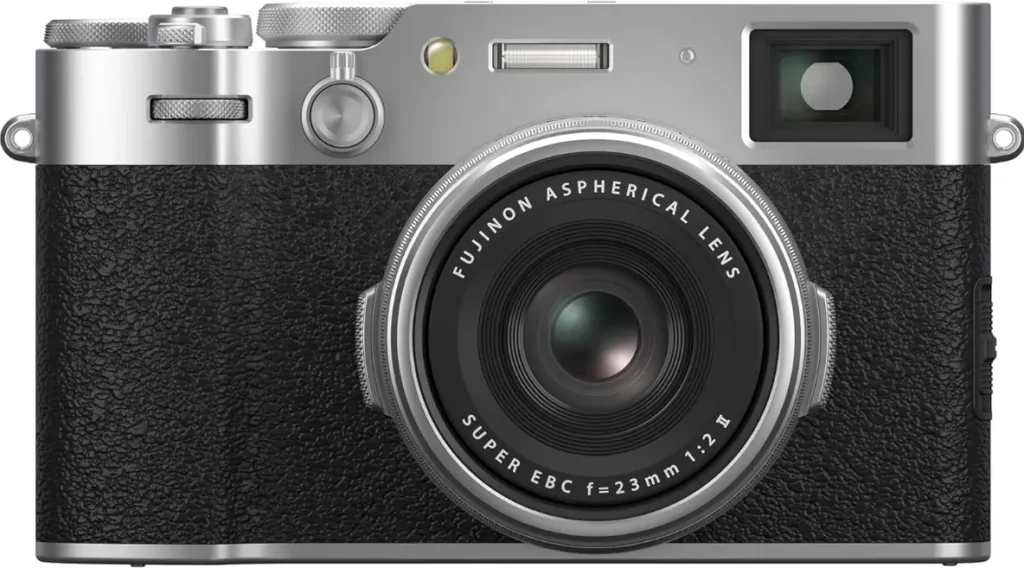
4. Fujifilm X100VI
All wrapped up in a trendy, retro style, the high-end compact camera Fujifilm X100V offers a fixed focal length ideal for street photography.
Best Travel
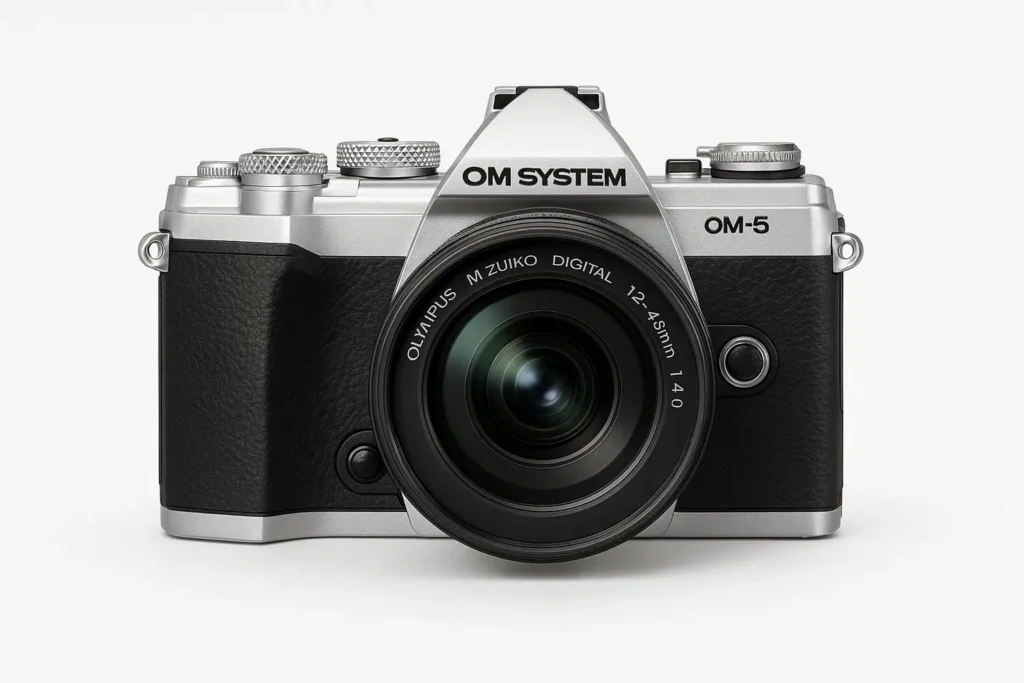
5. OM System OM-5
If we have to choose between tough compacts and flexible mirrorless hybrids, the OM System OM-5 would be our first choice.
THE BEST FULL-FRAME HYBRID OVERALL
- NIKON Z6 III
Specifications
Type: Mirrorless
Sensor: 24.5MP Full-Frame Partially Stacked BSI CMOS
ISO Range: 50–204800
Stabilization: 5-Axis IBIS
Autofocus: Hybrid AF
Burst Rate: 20fps (full res), 120fps (APS-C crop)
- Dimensions: 4.0 x 5.5 x 2.9 inches
Video: 6K at 60p
Viewfinder: EVF, 5.8M dots, 0.8x magnification
Monitor: 3.2″ Vari-Angle Touchscreen, 2.1M dots
Card Slots: 2 (SDXC UHS-II & XQD/CFexpress Type B)
Lens Mount: Nikon Z
Battery: Nikon EN-EL15c
The Nikon Z6 III is one of the best full-frame, mirrorless cameras you’ll find in 2025, offering incredible versatility for both photo and video needs. It’s a mid-range all-rounder that competes well against pro models like the Z8, A7 IV, and EOS R6 II, providing 24.5MP resolution and a partially-stacked sensor that offers burst speeds of up to 60fps for full resolution JPEG images.
Whether shooting in low light or tracking subjects like people, animals, or vehicles, its autofocus system is reliable. The camera’s 5.76m-dot EVF is one of the most vibrant and bright displays I’ve used, and the 3.2-inch vari-angle screen makes shooting at difficult angles a breeze.
For those who love to shoot video, the Z6 III doesn’t disappoint. It supports 6K video at 60fps, oversampled 4K, raw, and 120fps with impressive 10x slow motion at 240fps in Full HD — all in-camera with 120 minute record times. If you’re into action shots, the 20fps capture rate and 3D Tracking make it a dream for sports and wildlife photographers.
If you’ve already invested in Nikon F SLR lenses, you can use them via an adapter or stick with the growing lineup of Z mirrorless lenses. It’s also a great choice for those considering alternatives like the Canon EOS R6 Mark II or Sony A7 IV, providing a similar level of performance.
Positive aspects
Negative aspects
- Stabilized complete frame sensor
- Raw with 3D tracking at 20fps
- Raw and ProRes video supports from 6K60
- Typical battery lifetime
- Reduced dynamic range
- Rivals 33MP offers more detail
THE BEST MIRRORLESS CAMERA FOR BEGINNERS
2. Canon EOS R10
Specifications
- Sensor Resolution: 24.2MP APS-C CMOS Sensor
- Dimensions: 3.5 x 4.8 x 3.3 inches
- Weight: 15.1 oz
- Battery Type: Canon LP-E17
- ISO Range: Minimum ISO 100, Maximum ISO 51200
- Stabilization: None
- Display Size: 3 inches
- Connectivity: Bluetooth, USB-C, Wi-Fi
- Continuous Shooting Speed: 23 fps E. Shutter, 15 fps Mech. Shutter
- Viewfinder: 2.36M-dot OLED EVF
- Display: 1.04M-dot Vari-Angle Touchscreen LCD
- Lens Mount: Canon RF
- Memory Card Slot: Single UHS-II SD slot
- Flash: Built-in pop-up flash
- Autofocus: Dual Pixel CMOS AF II
- Video Resolution: 4K30 Video, 4K60 with Crop; HDR-PQ
When it comes to getting started in photography, a beginner-oriented camera that is affordable, light, and easy to use is key. For many, the Canon EOS R10 stands out as a winning option. Its compact design makes it a practical choice for those looking to take it on the go, whether it’s a day out in the park or a family gathering. The small size is perfect for beginners, as it’s not too intimidating to handle, yet still delivers amazing image quality.
One of the standout features of the Canon EOS R10 is its burst rate, offering continuous shooting at 15fps. This makes it great for capturing fast-moving moments, like kids playing or your dog running through the water. Plus, it’s equipped with an impressive autofocus system, ensuring sharp focus even on moving subjects. Whether you’re snapping photos of your family portrait or capturing a vlog, the autofocus smarts make it incredibly easy for a beginner to get great results every time. The camera also supports 4K/60p video, so it’s perfect for vloggers and travel enthusiasts alike.
The Canon EOS R10 features manual controls that are not too overwhelming, giving new photographers a chance to learn and experiment with different settings. With the Dual Pixel CMOS II technology and Digic X processor, it produces clear, high-quality images with great color accuracy. The physical controls are well-laid out, making it simple for beginners to switch between settings and feel comfortable while they learn. The fully-articulated screen is another practical touch, especially for taking selfies or shooting from unusual angles.
Lastly, the Canon EOS R10 falls into a great middle ground with its affordable pricing, making it a compelling choice for those new to photography but still want to grow with a camera that supports their evolving needs. Whether you’re capturing family gatherings or wildlife, this camera is ready for it all. The layout is intuitive, and the autofocus tracking ensures you’ll never miss that perfect shot, making the Canon EOS R10 an excellent choice for any new converts to the world of photography.
Positive aspects
Negative aspects
- Compact and lightweight, weighing only 429g
- Reliable autofocus system with superb subject recognition
- Fast burst rates, up to 15fps mechanical and 23fps electronic shutter
- No in-body image stabilization
- So-so battery life and small image buffer
- Cropped 4K/60p video with a small viewfinder
THE BEST PRO CAMERA FOR STILLS
3. SONY A7R V
Specifications
Sensor: 61MP full-frame Exmor R
Processor: BIONZ XR, 8x faster
AF System: 693 PDAF + 425 CDAF, Real-time AF
Video: 8K 24p, 4K 60p, 10-bit
Burst: 10fps RAW/JPEG
Stabilization: 5-axis, 8.0EV
LCD: 3.2″ flip screen, 2.1M dots
Formats: HEIF, JPEG, RAW
Pixel Shift: Multi-shot w/ motion comp
Bracketing: Up to 299 focus shifts
RAW Sizes: 61MP / 26MP / 15MP
Color: S-Log3, S-Cinetone, HDR
WB: AI w/ IR + visible sensors
Webcam: UVC/UAC plug-and-play
- EVF: 9.44M-dot high-res
If you’re serious about photography, the Sony A7R V is more than just a mirrorless camera — it’s a refined tool designed for professional studio work, landscape, and wedding shooting. Built around a 61MP full-frame sensor, this body uses a back-illuminated Exmor CMOS design to pull incredible detail, even in the most unforgiving Light conditions.
It feels incredibly stable in hand, with a rear grip and handling ergonomics clearly developed with professional-use in mind. I’ve used this setup personally in both studio and outdoor settings, and its Real-time Recognition AF never missed a subject — humans, animals, or even IR-lit scenes. The 693 PDAF points + 425 CDAF zones blanket the frame for accurate, fast-tracking autofocus, and the AI-based Auto White Balance system is ridiculously good at adapting to mixed lighting.
Beyond raw performance, its BIONZ XR processor gives you 8x the speed compared to the A7R IV — perfect for 10fps shooting in RAW or JPEG. The new 3.2-inch articulating LCD and ultra-detailed 9.44m-dot EVF enhance framing and usability, especially when fine-tuning exposure or navigating custom function button layouts. RAW Mode now supports Selectable 61MP, 26MP/15MP for Reduced-size files — a lifesaver for high-volume shoot days.
There’s Multi-shot Pixel Shift Mode too, ideal for studio product photography, producing sharp, color-accurate images with motion compensation. Video shooters aren’t left out either — 4K/60p and even 8K/24p with 10-bit options mean you’re always ready to shoot a high-end movie.
With UVC/UAC support, it can even double as a webcam, making it as versatile as it is powerful.
Positive aspects
Negative aspects
Top-tier autofocus with AI subject detection
Excellent ISO handling for low-light shooting
High-resolution EVF for precise framing
Very expensive at this price-point
Requires premium lenses to match 61MP sensor
Overkill resolution for casual or non-pro users
THE BEST PREMIUM COMPACT
4. Fujifilm X100VI
Specifications
- Sensor: 40.2MP X-Trans CMOS
- Lens: 23mm, f/2
- Monitor: 3.0-inch tilt-angle touchscreen, 1.62 million dots
- Viewfinder: EVF (Electronic Viewfinder)
- User Level: Intermediate
- Continuous Shooting: 11fps (mechanical), 20fps (electronic)
- Movies: 6.2K Video Recording
- Body Type: Large Sensor Compact
- Mirrorless: Yes
- Sensor Size: APS-C
The Fujifilm X100VI brings everything we loved about the Fujifilm X100V to a whole fresh level. Apart from its image quality, this high-end little camera distinguishes itself for performance and adaptability. Whether you’re photographing travel or street settings, the X100VI with a 40.2-megapixel sensor offers great flexibility and detail capture. The camera gets a historical sense from the traditional style and old-school exposure settings; the super-sharp fixed 23mm f/2 lens offers amazing clarity and a photography-first feel.
This camera is unique mostly because of its features, which make it a good substitute for other top models like the Leica Q3. With the hybrid optical viewfinder, you have the best of both worlds, and simple composition in any light is possible. Furthermore, even with handheld cameras, shooting at slower shutter speeds becomes simpler with in-body image stabilization (IBIS). If you enjoy quick action, the Fujifilm X100VI offers fast continuous shooting and its focusing mechanism can track subjects like persons, animals, and even automobiles, so it’s a perfect tool for intermediate users trying to record fast-moving subjects.
The X100VI meets all the requirements for individuals looking for a compact yet powerful camera for everyday use. It is portable and has a nice-to-use, easy-to-carry rangefinder-style design. While the tilting screen provides more artistic methods to shoot, including from waist level or higher, its max aperture and low-light capabilities make it ideal for a range of conditions.
The Fujifilm X100VI is set to wow in 2025 and includes everything you need in one package, whether you are filming 6.2K video or capturing amazing photos.
Positive aspects
Negative aspects
- Best-in-class 40MP sensor
- In-body image stabilization
- 6.2k at 30 fps, 4k at 60 fps
- Expensive
- Battery life on the shorter side
- Frequent overheating in 4k or higher resolutions
THE BEST TRAVEL CAMERA OVERALL
5. OM System OM-5
Specifications
- Processor: TruePic™ IX
- Self timer: 2s / 12s / Custom
- Effective pixels: 20.4 Megapixels
- Viewfinder: OLED Electronic Viewfinder
- Weight: 414g (including battery and memory card)
- Resolution:
1037K dots
- Display: Rear display and viewfinder
The OM System OM-5 is a top contender for the best digital camera when it comes to travel. It offers a perfect combination of talents that make it an ideal travel camera for both adventurers and everyday travelers. With a compact body and a weatherproof body, it ensures you’re ready to capture stunning moments in nearly any environment. The Micro Four Thirds (MFT) system offers the perfect balance of portability and ruggedness, meaning you can take it anywhere without compromising on image quality.
One of its standout features is the in-body image stabilization (IBIS) system. It offers steadier shots, even when shooting with small lenses or at slower shutter speeds, making it perfect for capturing still shots or video while on the move. The camera’s high-quality feel and dials allow for easy adjustments, while the Live ND feature and in-camera focus stacking let you achieve unique macro shots or capture the ethereal effect of blurring skies.
The sensor in the OM-5, despite being a part of the older Olympus OM-D E-M5 Mark III, still delivers exceptional results, though it lacks some of the newer features like the Live ND mode. Nevertheless, the image stabilization remains one of its greatest strengths. It provides a strong all-round capability, including 4K video with a video AF that tracks faces, ensuring smooth shots. The phase-detect autofocus and tracking system also allow for easy focus on moving subjects, whether you’re capturing a bustling street scene or an action-packed adventure.
With battery life lasting through long days of exploration and the ability to use a spare battery or portable power bank, the OM-5 stands ready for extended use. Its lens compatibility is broad, and with compact zooms and small prime lenses, this camera allows you to tailor your kit to suit your travel needs.
Despite its compact size, the OM System OM-5 truly punches above its weight, making it a standout for anyone looking to capture high-quality moments without being weighed down by bulky equipment.
Positive aspects
Negative aspects
- Compact and weather-sealed.
- In-body image stabilization (IBIS).
- 4K video and great autofocus.
- Lacks newer features like Live ND.
- Battery life needs spares.
- Cluttered menu.
Conclusion
Our team of experts reviewed these cameras to simplify your search and help you invest confidently in gear that supports your vision. No matter your skill level or budget, there’s a perfect match waiting, whether you’re after the best mirrorless camera for hybrid shooting, the best travel cameras for on-the-go adventures, or the best budget camera for unmatched versatility. Our expert-tested picks cover every need, from beginner-friendly options like the Canon EOS R10 to high-end performers like the Sony A7R V and Nikon Z6 III.
Frequently Asked Questions (FAQs)
What is the best rated camera for photography?
If we have to choose between tough compacts and flexible mirrorless hybrids, the OM System OM-5 would be our first choice.
Canon or Nikon which is better?
Both are good in their perspective. If you’re looking best full frame hybrid type, then You should go with Nikon Z6 III. However, if you’re looking for a mirrorless one, then Canon EOS R10 would be your ideal camera.
What's a good beginner camera?
Canon EOS R10 is the best beginner camera. Beginners will find great value in the Canon EOS R10, which has a small design, good handling and contemporary autofocus.

